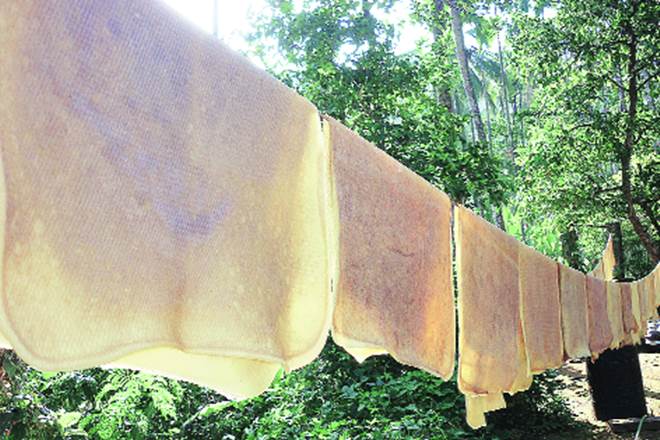After a long stretch of poor price realisation, the rubber planters have found the current tapping season, sparkling – both in output and in the differential of domestic and international prices.

Rubber Board of India had forecast an increase in output by 16% in the current season compared to the previous season.
The party isn’t over yet for rubber growers this production season. After a long stretch of poor price realisation, the rubber planters have found the current tapping season, sparkling – both in output and in the differential of domestic and international prices. “The season for tapping latex was to wind up in February. But because of summer rains and the increased rubber inventory-building of tyre firms, tapping season has extended to March,” says Sibi Monipally, general secretary of Indian Rubber Growers’ Association.
Rubber Board of India had forecast an increase in production by 16% in the current season compared to the production season in the previous fiscal year.
It is not that the natural rubber price is gaining. In fact, the domestic price of RSS-4, the premium grade sheet, has fallen 6% in the last one month.
The bright spot is that there is a healthy export option in the gap of international and domestic prices. When the international price is Rs 160 per kg, the domestic price has been staying around R150 per kg. Apparently, an export window has opened. This means that the Manimalayar Rubbers, an export firm in India, has been selling to even Brazil, the homeland of rubber.
Export possibility has given a psychological edge to the farmers over domestic buyers. The growers have already started switching to other crops in view of poor price realisation. In the first three months of 2017, as much as 12,000 tonnes have been exported, according to Rubber Board data.
Tyre companies, which had been leaning heavily on imports, are now wary of international prices. Dropping the import plans, they are now building warehouse facilities near the rubber production centres in Kerala. Rubber production is envisaged to touch 6.54 tonnes this fiscal year.
The Association of Natural Rubber Producing Countries, in its latest report, had hinted that the erratic rubber sheet supply from Thailand, world’s biggest producer, could keep the international price volatile. Secondly, as the oil prices go south, following US build up of crude inventories, the price of synthetic rubber has also been falling. This could mean that the rubber price would surge in the international market, after March.




























